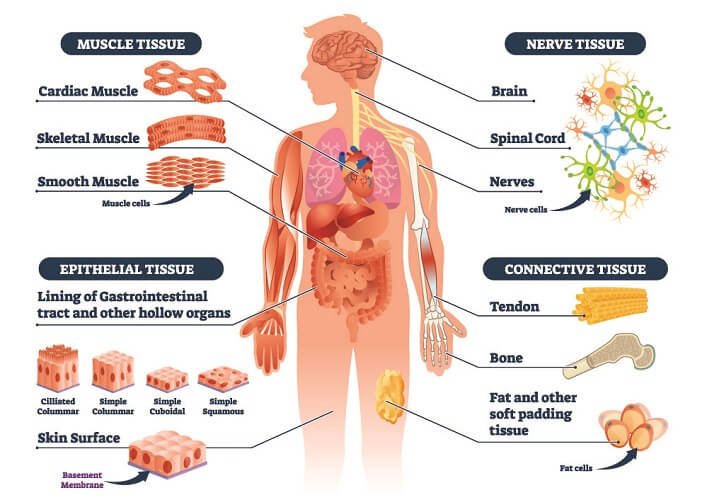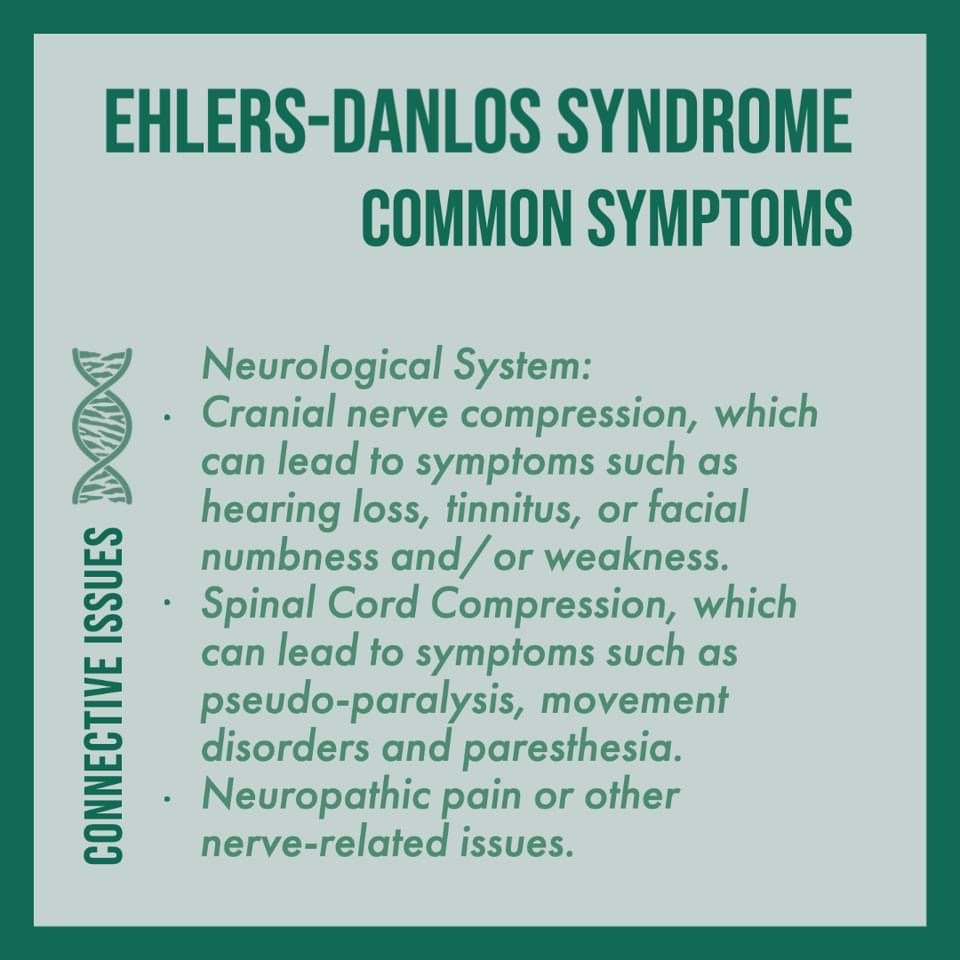
What is EDS?
The Ehlers-Danlos syndromes are a group of connective tissue disorders that can be inherited and are varied, both in how they affect the body and in their genetic causes. They are generally characterised by joint hypermobility (joints that stretch further than normal), skin hyperextensibility (skin that can be stretched further than normal), and tissue fragility.
Connective tissue is the material in the body that binds together, supports, and separates different tissues
and organs. Found between other tissues everywhere in the body, it provides strength and flexibility, and helps perform general functions as well as specialized services. Connective tissue disorders disrupt these most fundamental processes and structures of the body, so resulting problems can be widespread, in a wide range of severities, and affect areas that might seem to be otherwise unrelated.
As collagen is present throughout the body, people with EDS tend to experience a broad range of symptoms, most of them less visible than the skin and joint differences. These are complex syndromes affecting many systems of the body at once, despite this EDS is often an invisible disability.
Symptoms commonly include, but are not limited to, long-term pain, chronic fatigue, dizziness, palpitations and digestive disorders. Such problems and their severity vary considerably from person to person, even in the same type of EDS and within the same family.
How EDS Impacts Julie’s Life
Julie’s EDS has resulted in a very rare related condition which involves the severe laxity of the connective tissues of her spine and skull.
Along with the already debilitating symptom of EDS, Julie has to contend with the additional issues involved in Craniocervical Instability (CCI), Atlantoaxial Instability (AAI), Atlantoaxial Subluxation (AAS), and Tethered Cord Syndrome (TCS).
These are a group of conditions caused by EDS. The bones of the skull and spine are not connected correctly. They move over each other resulting in the brain stem and spinal cord being crushed and stretched, while TCS is when the spinal cord is attached to the inside of the spinal column which prevents it from moving freely, as it should, and pulling it tightly causing many painful symptoms.
This impacts the functioning of every system in the body and thus causes many adverse symptoms.
EDS cannot be cured. Symptoms can be managed to a certain degree. This is different for each person. Fortunately, CCI, AAI, AAS, and TCS can be successfully treated with specialised surgeries.
With the wrong movement or a jolt to the head or neck, it is possible for the bones to dislocate completely and cause an internal decapitation.
Julie spends around 23 hours each day in bed so that her head and spine are supported and also due to the overwhelming pain, intense fatigue, and her numerous other symptoms which are debilitating.
Ehlers Danlos Syndrome is Complex
Ehlers Danlos Syndrome affects the body’s connective tissues. This video below explains just how many body systems are comprised of connective tissues and therefore are impacted by EDS.
80% of the human body is composed of connective tissues. This means that a person with EDS may have issues with as much as 80% of their body.
Connective tissues have five functions in the body.
Protection
Support
Binding
Transport
Immunity
The types of tissues which are connective tissues:
Connective Tissue Proper
Tendons, ligaments, dermis, arteries and cardiac tissues, muscles, nerves, lymphatic organs (eg, spleen), areolar tissue (binds & anchors organs), fat tissues, tissues protecting organs and cells including the brain and spinal cord, lining of gastroenterological tract and other hollow organs
Supportive Connective Tissue
Bones, cartilages covering articulating joints and bone ends, elastic cartilage of ears and epiglottis, fibrocartilage of the vertebrae, knee meniscus, and other compressing cartilage
Fluid Connective Tissue
Blood



EDS explained simply













